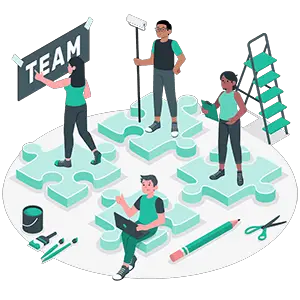
Guide: Rapid Improvement Event (RIE)
Author: Daniel Croft
Daniel Croft is an experienced continuous improvement manager with a Lean Six Sigma Black Belt and a Bachelor's degree in Business Management. With more than ten years of experience applying his skills across various industries, Daniel specializes in optimizing processes and improving efficiency. His approach combines practical experience with a deep understanding of business fundamentals to drive meaningful change.
×

 The composition of the RIE team is a pivotal factor in the event’s overall effectiveness. A cross-functional team brings together employees who interact with the process daily and those from supporting roles, including quality assurance, maintenance, and management. This mix is deliberate, aiming to pool diverse perspectives and expertise, thereby enabling the identification of comprehensive, robust solutions. The team’s multidisciplinary nature ensures that all aspects of the process are examined and that proposed improvements are feasible across different dimensions of the organization.
The composition of the RIE team is a pivotal factor in the event’s overall effectiveness. A cross-functional team brings together employees who interact with the process daily and those from supporting roles, including quality assurance, maintenance, and management. This mix is deliberate, aiming to pool diverse perspectives and expertise, thereby enabling the identification of comprehensive, robust solutions. The team’s multidisciplinary nature ensures that all aspects of the process are examined and that proposed improvements are feasible across different dimensions of the organization. The kick-off meeting marks the official start of the RIE. It serves several vital purposes: reaffirming the objectives of the event, clarifying the roles and responsibilities of each team member, and outlining the agenda. This meeting is more than just an administrative checkpoint; it’s a strategic session that sets the tone for the entire event. Emphasizing teamwork and open communication from the outset is crucial. It ensures that all team members are aligned with the goals, understand their part in achieving them, and feel comfortable sharing their insights and ideas. The success of the RIE is heavily dependent on the team’s ability to collaborate effectively and maintain a high level of engagement throughout the event.
The kick-off meeting marks the official start of the RIE. It serves several vital purposes: reaffirming the objectives of the event, clarifying the roles and responsibilities of each team member, and outlining the agenda. This meeting is more than just an administrative checkpoint; it’s a strategic session that sets the tone for the entire event. Emphasizing teamwork and open communication from the outset is crucial. It ensures that all team members are aligned with the goals, understand their part in achieving them, and feel comfortable sharing their insights and ideas. The success of the RIE is heavily dependent on the team’s ability to collaborate effectively and maintain a high level of engagement throughout the event. With a solid understanding of the current state, the team moves into a creative mode,
With a solid understanding of the current state, the team moves into a creative mode, 
 To ensure that the improvements made during an RIE are sustained over time, documenting the changes and standardizing the new processes are imperative steps. This documentation process involves updating process maps, work instructions, and training materials to reflect the new methods. By creating a clear and accessible reference point, the organization ensures that the new standards are clearly understood and followed. This standardization is not just about maintaining the status quo; it also provides a foundation for future improvements. Effective documentation helps in onboarding new employees and in training current employees on the optimized processes, thereby embedding the improvements into the fabric of the organization.
To ensure that the improvements made during an RIE are sustained over time, documenting the changes and standardizing the new processes are imperative steps. This documentation process involves updating process maps, work instructions, and training materials to reflect the new methods. By creating a clear and accessible reference point, the organization ensures that the new standards are clearly understood and followed. This standardization is not just about maintaining the status quo; it also provides a foundation for future improvements. Effective documentation helps in onboarding new employees and in training current employees on the optimized processes, thereby embedding the improvements into the fabric of the organization.
